Matador Network's Blog, page 468
June 6, 2022
Watch: Photographer Captures Joshua Tree Sky Like You’ve Never Seen It

Light pollution is a hot topic. Many organizations around the world are working to protect our nighttime environment from the damage of artificial lights. In alliance with the International Dark-Sky Association crowdfunded project, SKYGLOW, is exploring North America’s dark skies, and the footage is out of this world.
SKYGLOW is raising awareness of the phenomena known as “skyglow,” caused by the increasing spread of electrical outdoor lighting. The excessive use of electrisity does more than restrict our enjoyment of stargazing and night-sky phenomena. It can also have harmful consequences on our fragile environment and be particularly damaging to wildlife.
The project is currently documenting the effects light pollution is having in North America. By contrasting footage in urban areas with that in dark-sky environments, such as Joshua Tree National Park, SKYGLOW shows us why we need to make changes now to protect this ecosystem for future generations.
SKYGLOW was created by cinematographer Harun Mehmedinovic, and filmmaker and screenwriter Gavin Heffernan.
MOONLIGHT MOJAVE from Sunchaser Pictures on Vimeo.
Joshua Tree is one of the best places in the US for star gazing. Officially recognized as an International Dark Sky Park, Joshua Tree is known for having little to no light pollution due to its elevation in the High Desert and distance from major cities.
There are some fantastic night-sky tours in Joshua Tree, but you can also enjoy the stars by simply staying overnight in the park. There are plenty of beautiful Airbnbs, many of which have outdoor space where you can hunker down and stargaze.
If you are passionate about protecting our dark skies, there are quite a few things you can do to help. You can also donate to SKYGLOW or learn more about the importance of this project at one of their events. 
June 3, 2022
These Leavenworth Airbnbs Put You Near Downtown and Outdoor Adventures

Not only is Leavenworth, Washington, one of the best places to experience Oktoberfest without flying to Europe, but the alpine town offers a year-round roster of foodie and outdoor adventures. As well as ogling the Bavarian-themed architecture of Front Street with a pretzel in hand, Leavenworth is the perfect base to explore the Cascades. Find your Airbnb Leavenworth vacation home here.
Leavenworth Airbnb rentals with a poolAirbnb Leavenworth options for larger groupsWe hope you love the Airbnb Leavenworth stays we recommend! Just so you know, Matador may collect a small commission from the links on this page if you decide to book a stay. Listed prices are accurate as of the time of publication.
Airbnb Leavenworth, Washington, cabins and lodgesStones Throw Cottage in Downtown Leavenworth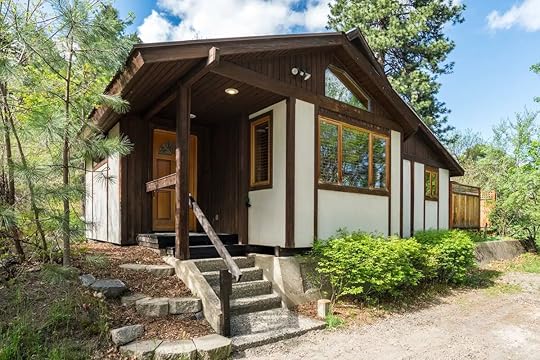
Photo: Airbnb

Photo: Airbnb

Photo: Airbnb
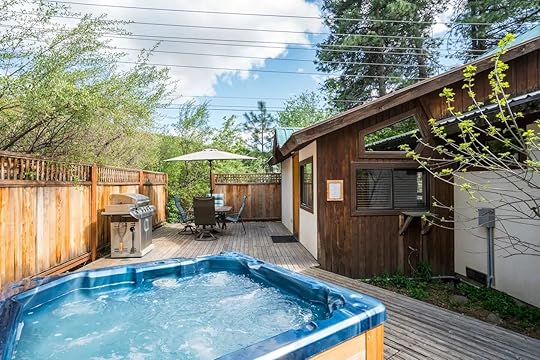
Photo: Airbnb
This super-cute cottage might deceive you at first glance: the insides are far roomier than you may expect. Step out of the kitchen door and you’ll be on your private deck with a hot tub, grill, and dining area surrounded by forestry. Consisting of an open-plan kitchen and lounge, the home contains one bedroom and is a welcoming Leavenworth vacation rental for couples seeking a rental in the heart of downtown.
Four guests, one bedroom
Price: $270 per night
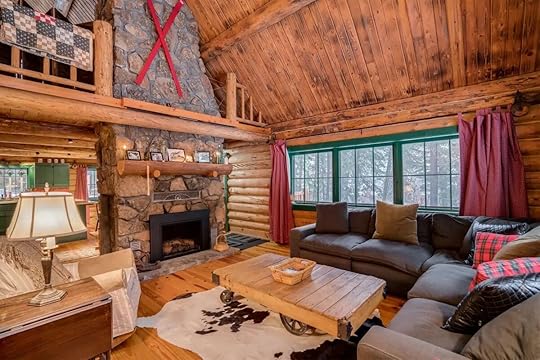
Photo: Airbnb
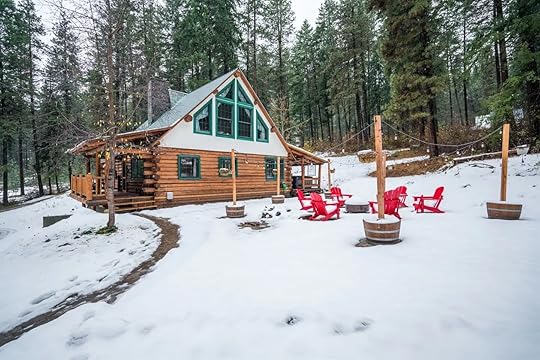
Photo: Airbnb
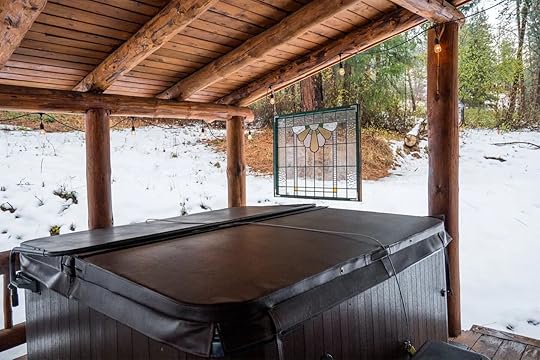
Photo: Airbnb

Photo: Airbnb
Once upon a time, this Leavenworth Airbnb cabin was built deep in the woodlands waiting to fulfill your fairytale goals. Barenhutte is a sanctuary of timber beams, exposed stone, plush couches, and a roaring open fire. With a master suite in the loft plus a bunk room, it’s equally suited to couples and small families. Choose between the luxury clawfoot bathtub, the open-air hot tub, or the reading nook for a spot of unwinding after a day on the trails.
Four guests, two bedrooms
Price: $360 per night
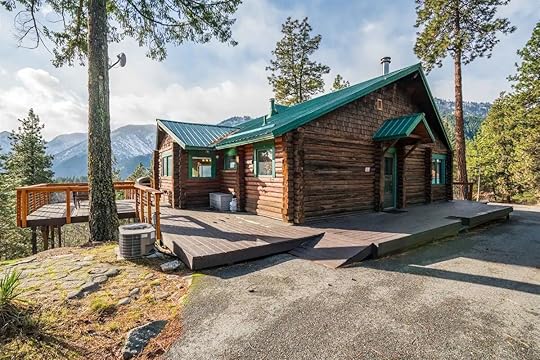
Photo: Airbnb
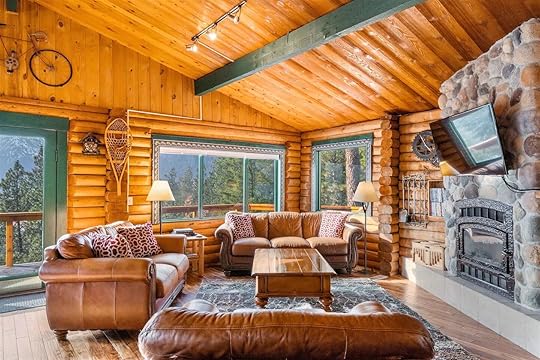
Photo: Airbnb

Photo: Airbnb

Photo: Airbnb
Leavenworth Lookout is a new arrival to the Airbnb Leavenworth scene. This elevated log cabin is encircled by a deck making it all the better to bask in the mountain views. An oversized fireplace and comfy beds with blankets aplenty keep the home warm and snug on winter nights. The book nook is a bibliophile’s dream come true while bakers will be delighted by the cookie cutters and other baking supplies in the well-stocked rustic kitchen.
Six guests, five bedrooms
Price: $630 per night

Photo: Airbnb
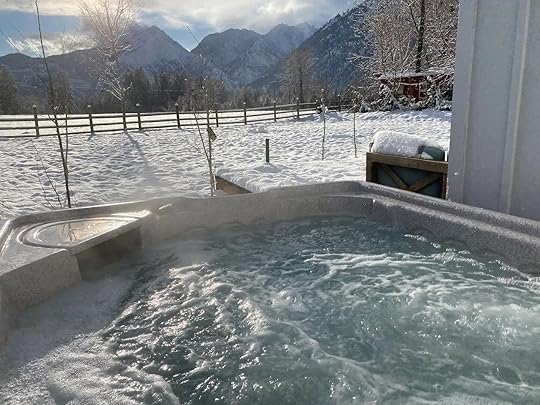
Photo: Airbnb
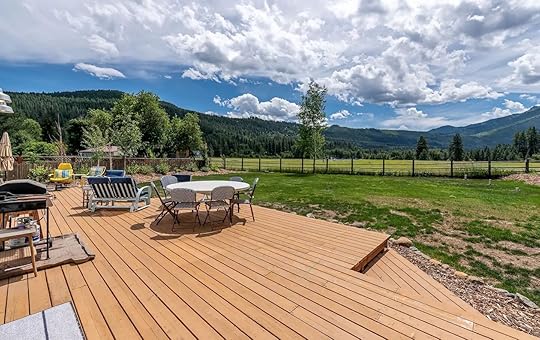
Photo: Airbnb
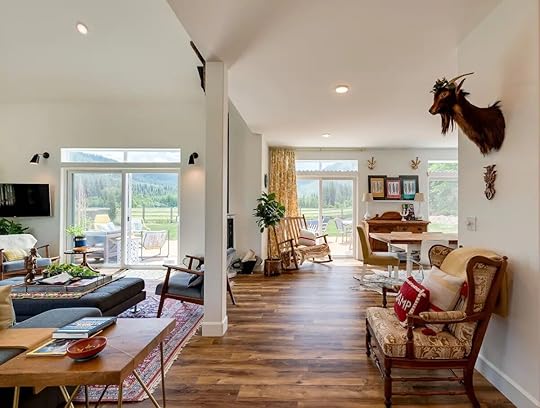
Photo: Airbnb
Leavenworth Field House is immaculately appointed with plush furnishings, eccentric trinkets, and a stylish wood burner. French sliding doors open out onto an epic deck and lawn with a grill and hot tub. This pet-friendly Airbnb Leavenworth Washington provides plenty of space for dogs and kids to burn off some energy. Themed bedrooms are homely and equipped with desks in case you need to work – or finally pen that novel – from the mountains.
Six guests, three bedrooms
Price: $430 per night

Photo: Airbnb
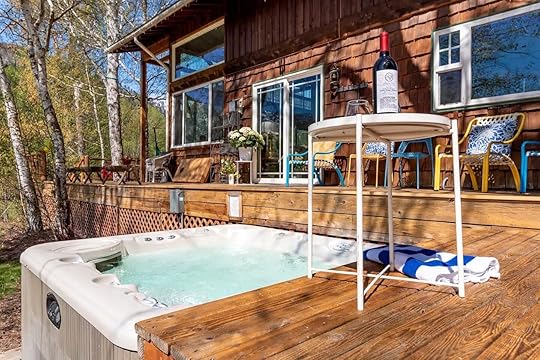
Photo: Airbnb
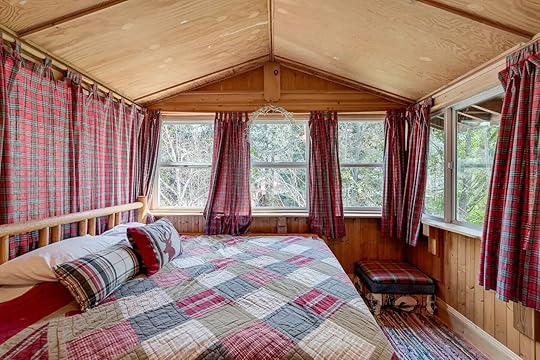
Photo: Airbnb
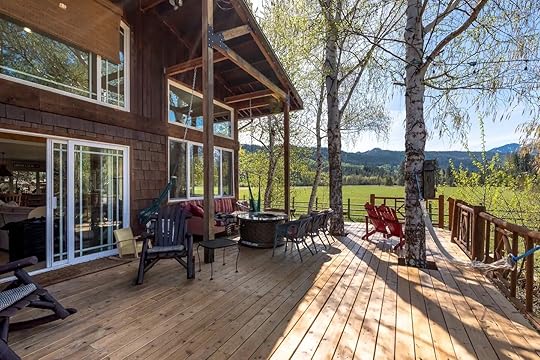
Photo: Airbnb
This riverfront Leavenworth Airbnb vacation lodge offers views of the Enchantments from the rear deck. A spacious lawn meets the water and there is a swinging bed, hammock, and hot tub for the ultimate R&R session. Scandi-style interiors create hygge vibes with a mix of cozy dens and a whimsical sleeping cubby that accommodates adults and kids alike. Pets are welcome subject to a small fee.
Eight guests, four bedrooms
Price: $480 per night
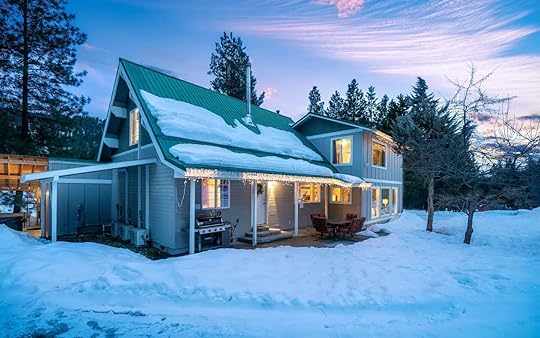
Photo: Airbnb
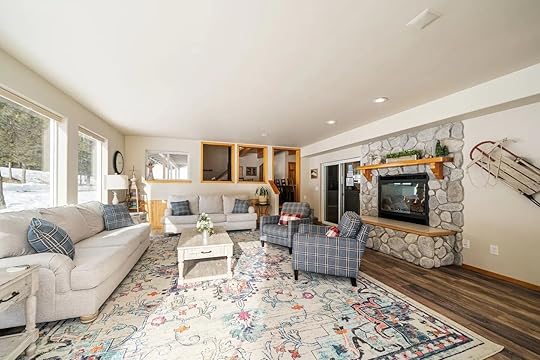
Photo: Airbnb
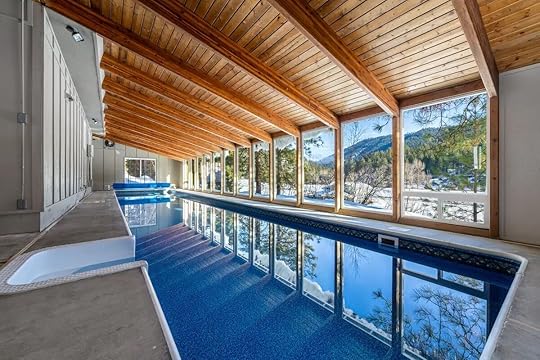
Photo: Airbnb
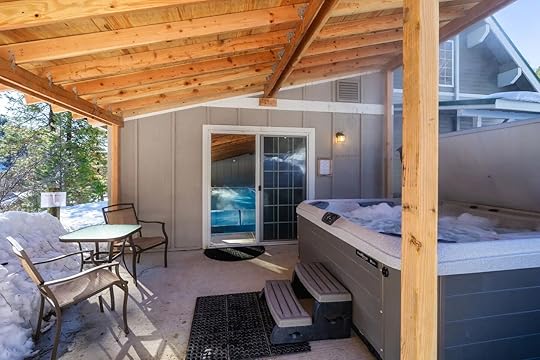
Photo: Airbnb
This six-bedroom Airbnb Leavenworth rental has a swimming pool, a truly luxury abode two miles out of town. The indoor pool means that you can get your laps in even during the thick of winter. Ample floats and pool toys are provided to keep the kids entertained. If that wasn’t enough, you’ll have access to an external hot tub, a ping-pong table, and a large backyard.
Twelve guests, six bedrooms
Price: $1,150 per night
Book here

Photo: Airbnb
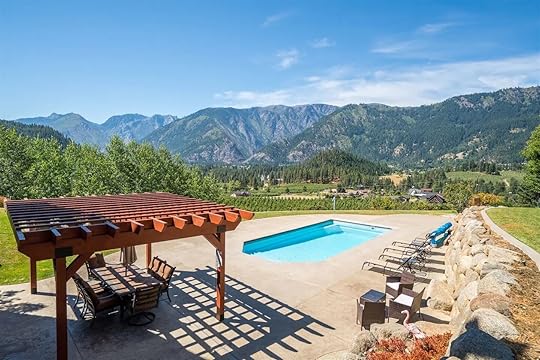
Photo: Airbnb

Photo: Airbnb
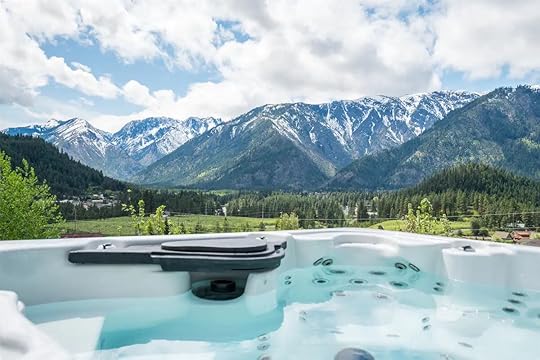
Photo: Airbnb
You’ll be hard-pushed to find views that compare to those from this mountainside Leavenworth Airbnb. Vistas from the hot tub and seasonal salt water pool overlook the Upper Leavenworth Valley and the Enchantments. Continuing the theme of a colonial-style manor estate, the interior spaces nod toward vintage features. Wash away your worries in the clawfoot tub or indulge in a nap on the chaise longue when you’re not gobbling up the scenery.
Six guests, five bedrooms
Price: $565 per night
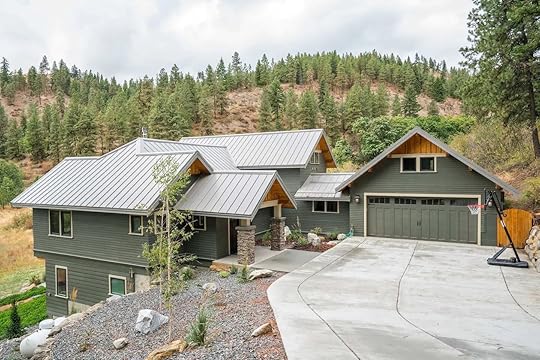
Photo: Airbnb
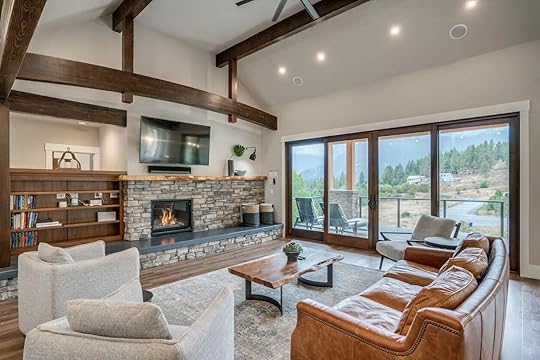
Photo: Airbnb

Photo: Airbnb

Photo: Airbnb
A short drive from downtown Leavenworth, Lookout Lodge is set among 1.5 acres with views over the Enchantments. The lower level is curated specifically for kids with a play zone, extra-large TV, and a solid selection of games. Meanwhile, the garage has been transformed into a games room and there’s a basketball hoop on the drive. Visit during winter and you can have a go on the tubing half pipe. Summer guests can look forward to lazy hammock days. Soaks in the hot tub are on the agenda whatever the season.
Ten guests, four bedrooms
Price: $2,040 per night
Book here

Photo: Airbnb
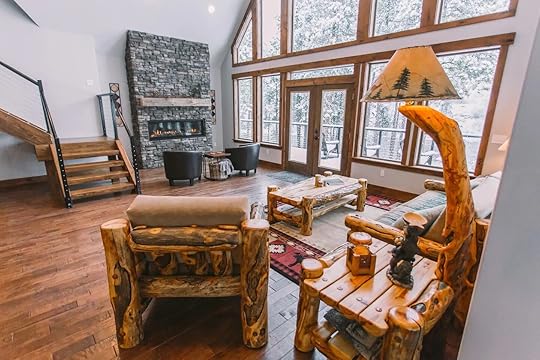
Photo: Airbnb
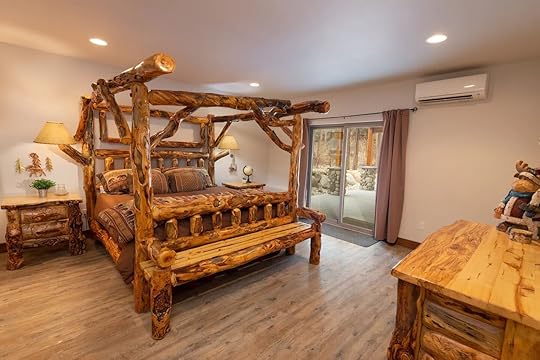
Photo: Airbnb
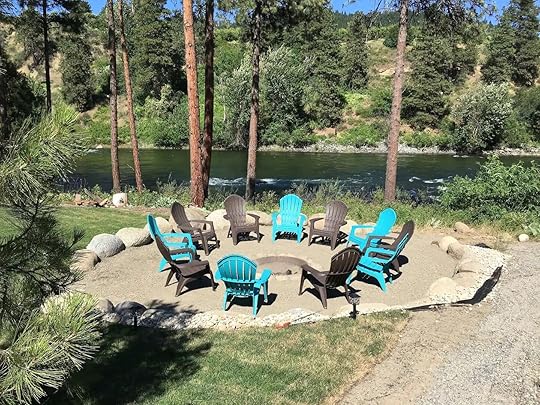
Photo: Airbnb
Newly constructed in a secluded spot on the banks of the Wenatchee River, this Leavenworth Airbnb is still only two miles from downtown. The property features a mix of suites and a bunk den making it a top pick for families or groups. Besides the expansive lawn and main decks, select rooms come with private balconies. A hot tub, fire pit, and direct river access seal the deal at this palatial and peaceful retreat.
Sixteen guests, five bedrooms
Price: $1,360 per night
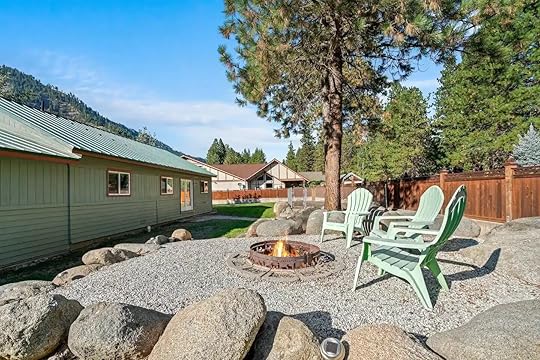
Photo: Airbnb
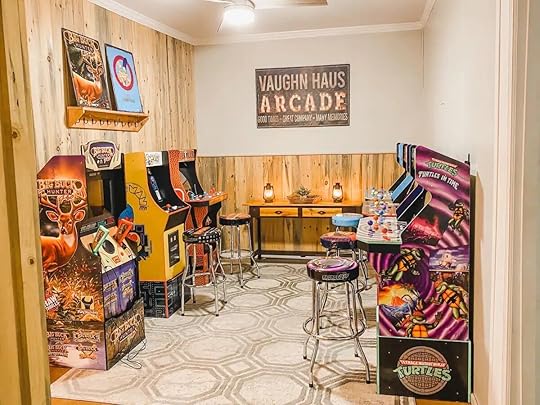
Photo: Airbnb
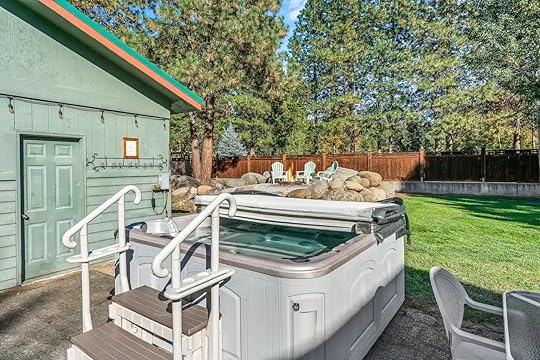
Photo: Airbnb
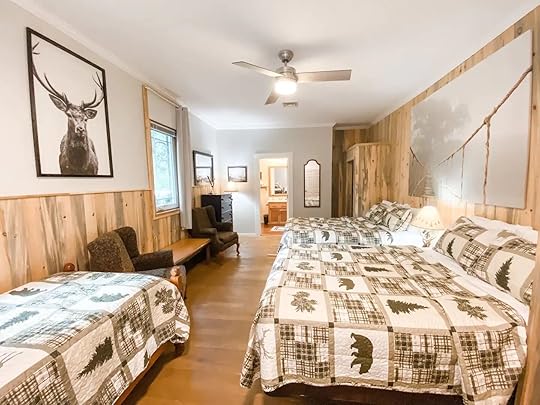
Photo: Airbnb
This pet-friendly Leavenworth Airbnb is perfect for adventure-seekers and golfers. The house backs onto the Leavenworth Golf Club and is a quarter of a mile from the closest kayak launch. Alongside the hot tub, fire pit, and fenced backyard, the highlight is the arcade game complete with all the retro consoles you could imagine.
Twelve guests, three bedrooms
Price: $1,000 per night
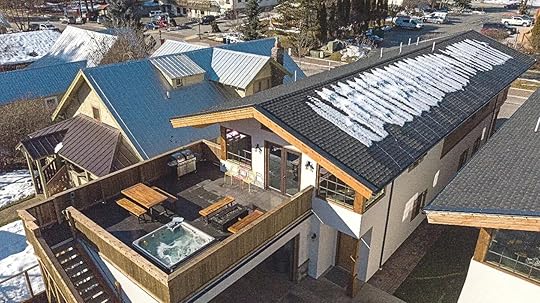
Photo: Airbnb

Photo: Airbnb

Photo: Airbnb
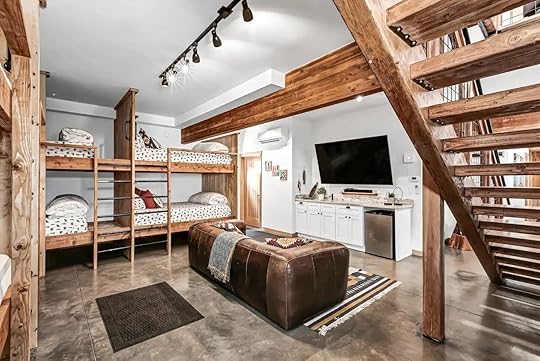
Photo: Airbnb
This downtown Leavenworth Airbnb is a 5-minute walk to the town’s sights, shops, and restaurants. The main living quarters are open-plan to ensure the conversation flows. All of the home’s bedroom suites come with an en suite bathroom while the bunk room will delight any kids in the group. Heated floors will keep you warm during winter while there’s a fire pit and hot tub waiting for you on the deck. Franz Lodge buddies up with Hans Lodge should you need additional space. 
Sixteen guests, six bedrooms
Price: $1,370 per night
The 5 Best Countries for Vegetarian and Vegan Travelers

One of the best parts of traveling to a new destination has to be trying out the local cuisine. However, this might prove challenging for travelers who adhere to strict food restrictions. For vegetarian and vegan travelers it’s important to have access to delicious local cuisine that’s animal product-free, but sometimes its difficult to decide where to travel if you don’t know where to find food that fits your diet beforehand. Asher and Lyric, a travel blog, conducted data analysis to create the vegan travel index which revealed the best and worst countries for vegetarian and vegan travelers.
To create the vegan travel index, Asher and Lyric looked at 39 countries and ranked them based on the number of vegetables, fruits, and legumes each country produces per capita per year, the percentage of the population that is vegetarian or vegan, the number of vegan and vegetarian restaurants per 1 million annual tourists, and the amount of meat and seafood the country produces per capita per year. The highest possible score was 400 points and the lowest possible score was -200 points.
However, the study does not supply the first-hand experiences of vegan or vegetarian tourists who have actually visited the countries on this list, so there’s no way of knowing, based on this particular study, if the points system translates to a truly accessible food experience for vegans and vegetarians. The study also notes that a country’s results may be skewed by a singular city that is very “veg-friendly,” like metropolitan hubs.
Now on to the rankings: In fifth place, with a score of 98 out of 400 points is Israel. Israel scored high because 13 percent of its population is vegan or vegetarian, and there are 151 vegan/vegetarian restaurants per one million tourists. In fourth place is Vietnam, which scored 101 points. The country has a large Buddhist population that is lacto-vegetarian, making the local cuisine very accessible for vegan and vegetarians.
In third place is Brazil with 133.4 points. This might be surprising if you’re familiar with the popularity of Brazilian barbecue. The country does indeed have a high rate of meat consumption and a comparatively low rate of vegetable consumption, yet at the same time, Brazil has a high number of vegan-and-vegetarian-friendly restaurants per every 1 million tourists each year. In second place is Mexico with 134.7 points, which can be credited to its high fruit and legume production rates (although the study doesn’t account how much of its produce is exported). And finally, in first place is India by a landslide with 227.6 points. 29 percent of the country is vegetarian, so this country has the highest percentage of vegetarians in the world and easily caters to vegan and vegetarian travelers.
The best countries for vegetarian and vegan travelersIndiaMexicoBrazilVietnamIsraelWhether you are vegan or vegetarian, if you do decide to travel to these countries, you won’t want to miss out on the great vegetarian dishes each one has to offer: In Israel, try local favorites like falafel or shashuka, which is a tomato stew topped with eggs. are known for their layered flavors, so vegetarian pho and other noodle dishes are essential eating. Mexico City has amazing vegan street tacos, and inIndia you’ll find rice, curry, and lots of street food, prepared with rich spices. 
The 7 Best Nude Beaches in California
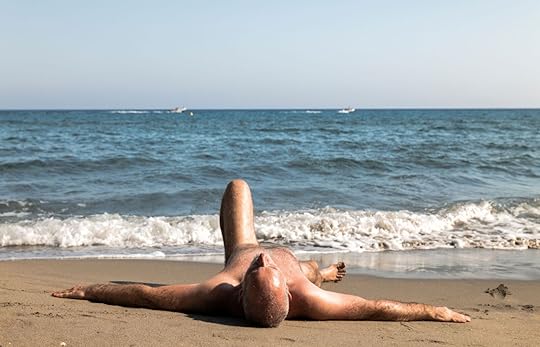
In the winter, people always say they look forward to getting a tan, but beach season proves those people to be all talk. Sure, they haul out their blankets and chairs, strip down to their swimsuits, and roast for way longer than the doctor would recommend, but it’s still just a half measure. Most people aren’t getting tans—not really—because they’re keeping parts of their bodies covered up in the name of “decency.”
That’s why we should turn to the real tanning aficionados. These brave souls confidently shed their clothes—swimsuit included—before the gawking eyes of the entire beach. These people, and the beaches that welcome them, understand what the stuffy, puritanical beachgoers of yesteryear won’t admit. Bare is beautiful. Nude is the future. Unsurprisingly, California is ahead of the curve when it comes to progressive beachgoing. While you can find nude beaches across the country, if you know where to look, nude beaching is a way of life in California like nowhere else. Whether it’s San Diego’s famous Blacks Beach or the more low-key Devil’s Slide Beach in Half-Moon Bay, these are the best nude beaches in California.
Blacks Beach, San Diego
Photo: Alexandre Moraes/Shutterstock
Blacks Beach in La Jolla, San Diego, is one of the most popular nude beaches in California. Accessible via a steep, scenic, and winding trail from Torrey Pines Gliderport, the beach is known not only for nude sunbathing but also for nude sports like volleyball. The whole beach is nudist-optional, though the section north of the trailhead attracts the most nudists. Given its popularity, it tends to get extremely crowded, so if you’re not prepared to bare it all in front of a large crowd for the first time, a more secluded beach may be preferable.
More Mesa Beach, Santa Barbara
Photo: Bryce Kanowsky/Shutterstock
In the shadow of the Santa Barbara bluffs, between the USCB campus and Hope Beach, you’ll find the nude Mesa Mesa beach. Follow the pedestrian access path to the grove of eucalyptus trees to reach the beach. Make sure to stay to the north of the trail, as the south is designated for non-nude beachgoers and is often frequented by families. Contrary to the stereotypical perception of nude beaches being filled with octogenarians, this beach’s proximity to USCB means it’s largely popular with college students, making for a younger and more lively feel.
Devil’s Slide Beach, Half Moon Bay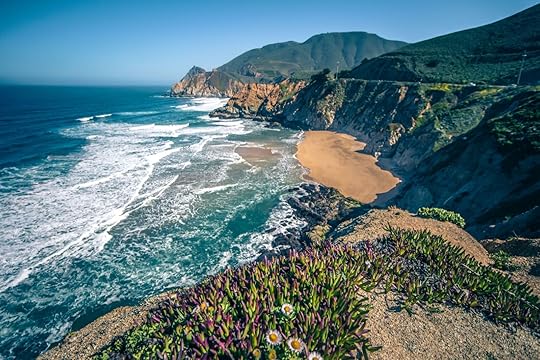
Photo: digidreamgrafix/Shutterstock
Devil’s Slide Beach has it all: towering bluffs, wildlife, and nudity. Sitting under the coastal bluffs, the beach is also known as Gray Whale Beach due to the whales that often swim past in the spring. The waters are also home to great white sharks, however, so take care when entering the ocean. While it might sound like a misnomer for such a beautiful place, the name actually comes from the landslides caused by erosion in the area, making for some pretty impressive geological formations. Take note: Nudity is only permitted on the north end of the beach.
San Gregorio Beach, San Gregorio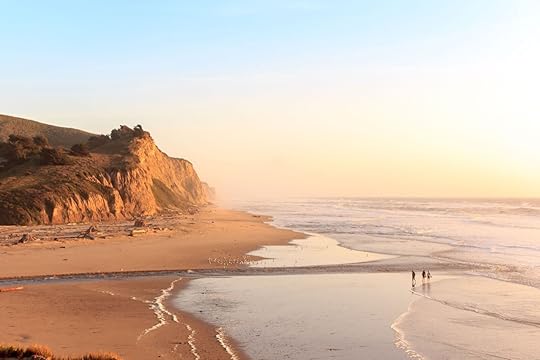
Photo: Duilio Farina/Shutterstock
Spanning a massive shoreline in San Mateo County, San Gregorio Beach is home to several sea caves formed by wave erosion. It’s mostly known, however, for its gay scene and as one of the most accepting and inclusive beaches in California. The north end of the beach is the part where nudity is allowed (and encouraged), and even farther north is the most popular with gay beachgoers, but the south part of the beach is clothes-only—so sunbathe accordingly!
2222 Beach, Santa Cruz2222 Beach has long been an unofficial nude beach and a favorite of Santa Cruz locals. Accessible via a winding path and hidden beneath a residential neighborhood, this beach is a perfectly private place to catch some rays, as there are rarely more than a few dozen people here. In case you’re wondering, the beach’s rather unusual name comes from the street number of the house just across the way.
Bonny Doon Beach, Davenport
Photo: Lynn Yeh/Shutterstock
It might sound like a beach in the Scottish Highlands, but it actually lies at the southern end of Davenport. The wide beach is surrounded by nature and divided into separate coves by tall cliffs. While not officially considered a fully nudist beach (so expect to see some clothed beachgoers), Bonny Doon is a well-known naked beach and broadly tolerant of the practice. So don’t feel shy about stripping down. There’s also an annual gathering of nudists here on New Year’s Day, to ring in the new year with a brisk beach sesh.
Baker Beach, San Francisco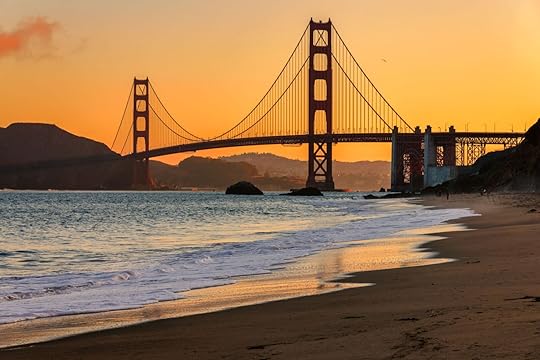
Photo: Lucky-photographer/Shutterstock
San Francisco is famous for embracing a wide range of lifestyles, and that includes naturism. Apart from its nudist reputation (on the northern side), Baker Beach is also famous for its view of the Golden Gate Bridge, as well as its storied past as the original venue for Burning Man (1986–1990). Thanks to its stunning bridge views, the beach is particularly good for lounging and sunbathing, though strong currents and cold temperatures don’t make for the best swimming conditions.
Deep Creek Hot Springs, San Bernardino
Photo: Tom Ha/Shutterstock
While not technically a beach, you won’t exactly mind when you’re lounging in these restorative, clothing-optional hot springs. There’s a small sandy beach and pools of varying temperatures, from 100 to 105 degrees. The largest pool is big enough for swimming, while the smallest can only accommodate a few people at once, so you might need to get cozy with some nude strangers. You’ll have to tackle a short hike to get to the springs, but the incredible views and soothing pools are worth it. And since the whole area is clothing optional, you can even hike nude…if that’s your thing. 
Indianapolis Will Host Its First Juneteenth Food Festival This Summer

Food is a central facet of Juneteenth celebrations in America. Juneteenth celebrates June 19, 1865, the day slaves in Texas were finally freed following the 1862 Emancipation proclamation. In particular, watermelon (a plant which originated in West Africa) and barbecue were centerpieces of the parties among formerly enslaved people. So now that Juneteenth is officially a federally recognized holiday, it should be no surprise that Juneteenth festivals are popping up all over the country — including one in Indianapolis, Indiana that is all about food.
It’s called the Juneteenth Foodways Festival and will take place at the Benjamin Harrison Presidential Site, the home of 23rd president Benjamin Harrison. Harrison has a reputation as a standout figure in American history for making at the time what were considered progressive choices about his White House staff: Not only did Harrison hire the first woman to work on a president’s administrative staff, he hired a Black caterer and chef, Dolly Johnson, to bring her distinctive style of cooking to the White House.

Photo: Benjamin Harrison Presidential Site
Johnson worked at the White House for seven months and quickly became renowned for her “Kentucky Bluegrass food.” Newspapers at the time even posited that the president preferred her food to that of the fancy French dishes prepared by the previous White House chef. Dishes she cooked at the White House included baked opossum, duck, and gumbo.
The exceptional chef is the inspiration for this Juneteenth food festival, which will highlight how Black Americans have contributed to this country’s culinary culture. The festival will even include a reenactment of Dolly Johnson’s life, including her time at the White House.
Around 20 Black-owned restaurants and caterers will participate in the Juneteenth food festival, in effort to support Black entrepreneurship and educate the public on how Black cooking traditions shaped the America we know today.
Admission is free and the festival will take place on June 17. 
June 2, 2022
Phoenix Airport Hotels That Put You Close To Your Flight and the Entire City

Phoenix Sky Harbor International Airport is among the country’s busiest connector hubs, with flights heading across the Pacific as well as around the Americas. Because the airport is located inside the metro area, each of these Phoenix airport hotels offers not only easy airport access but the ability to actually experience the region’s famed dining, nightlife, and outdoor recreation.
We hope you love the hotels near Phoenix airport we recommend! Just so you know, Matador may collect a small commission from the links on this page if you decide to book a stay. Listed prices are accurate as of the time of publication.
Hyatt Place Tempe Phoenix Airport
Photo: Booking.com

Photo: Booking.com

Photo: Booking.com

Photo: Booking.com
What’s cool about Hyatt Place Tempe Phoenix Airport is that each room feels like an apartment. Rather than the stuffy, economical rooms at many Phoenix airport hotels, Hyatt Place created a hotel you actually want to spend some time in. Pets are welcome and the onsite bakery-cafe is excellent for breakfast or lunch. Each room has a living room and kitchenette. The lobby is inviting and offers great WiFi. And the hotel not only provides a free airport shuttle, said shuttle can also drop you off at the nearby light rail station so that you can head into the city for dinner. That makes this the best of the hotels near Phoenix Sky Harbor International Airport for an extended stay of two nights or longer.
Airport shuttle: Yes24-hour front desk: YesFitness center: YesPrice: From $109 per night
Hilton Phoenix Airport
Photo: Booking.com

Photo: Booking.com

Photo: Booking.com
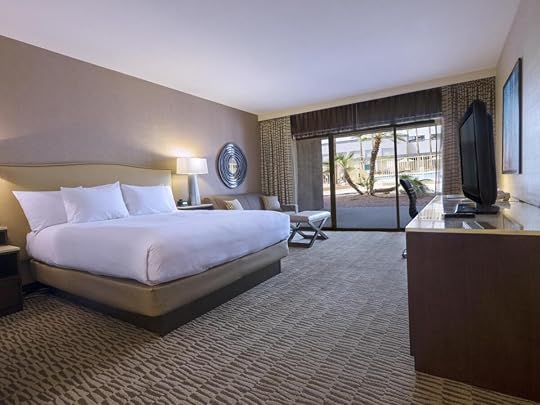
Photo: Booking.com
Staying at the Hilton Phoenix Airport is akin to checking into any Phoenix resort you’d choose for a golf, baseball, or business retreat. Expect warm hospitality, good food and drink from the onsite Rennick’s Restaurant, and a pool that your kids (or yourself) won’t want to leave. Hilton touts its Serenity beds, and for good reason – the Serta-made mattress is poofy and plush, designed for side, stomach, and back sleepers, leaving no one up all night. Of course, with Hilton, you get large rooms and concierge service that can point you towards the best experience whether you’re heading to the convention center, Chase Field, or the golf course – all of which are nearby.
Airport shuttle: Yes24-hour front desk: YesFitness center: YesPrice: From $116 per night
Aloft Phoenix Airport
Photo: Booking.com

Photo: Booking.com

Photo: Booking.com

Photo: Booking.com
The fact that Aloft Phoenix Airport exists is proof of the impending death of the boring airport hotel. Aloft is the hippest brand in the hotel market, with a trendy bar and pool scene, a game room, and a lobby that functions as both a social setting and productive remote workspace. The w xyz bar features live music that draws locals and travelers alike, you with the benefit of an easy stroll to your room when its time to call it a night. Public transit is nearby, as is the convention center, stadiums, and outdoor spaces. The hotel offers a deli market for breakfast, lunch, and dinner.
Airport shuttle: Yes24-hour front desk: YesFitness center: YesWhere Aloft Phoenix Airport stands apart:
Entertainment. With a great bar and pool scene and weekly live music, there’s always something happening.Modernity. Crisp, clean rooms and a vibrant ambiance make this a hip property.Price: From $110 per night
Courtyard by Marriott Phoenix Airport
Photo: Booking.com

Photo: Booking.com

Photo: Booking.com
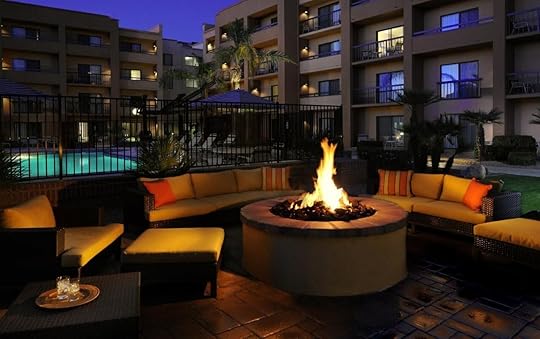
Photo: Booking.com
Courtyard by Marriott Phoenix Airport encapsulates the best of the Bonvoy portfolio for the guest wanting convenience in a sprawling metro area. Dine and drink at the Bistro restaurant, catch up on work before heading to the airport in the spacious lobby and lounge, and catch some fresh air on your own private balcony overlooking the pool. If in town for business and needing a place to unwind after work, this hotel is the best option – even moreso if you have an early flight out.
Airport shuttle: Yes24-hour front desk: YesFitness center: YesWhere Courtyard by Marriott Phoenix Airport stands out:
Efficiency. You know to expectVariety. Choose a room or opt for a suite without paying outrageous prices.Price: From $107 per night
DoubleTree Suites by Hilton Phoenix
Photo: Booking.com

Photo: Booking.com

Photo: Booking.com

Photo: Booking.com
Optimize your Hilton experience at the DoubleTree Suites by Hilton near Phoenix Sky Harbor International Airport. The property has the feel of a high-end resort, and that’s because it basically is one. The pool scene is vibrant, ringed by balconies and perfectly lit for an evening swim. The onsite Brix Kitchen and Cocktails is the best restaurant in any of the hotels near the Phoenix airport, with a fresh menu of local ingredients and an extensive wine list (we recommend enjoying a craft cocktail by the pool). Rooms are large and clean, with views out over the pool on one side and overlooking the city on the other. The hotel also offers a great breakfast buffet and deli market for grab-and-go items.
Airport shuttle: Yes24-hour front desk: YesFitness center: YesPrice: From $101 per night
Crowne Plaza Phoenix Airport
Photo: Booking.com

Photo: Booking.com

Photo: Booking.com

Photo: Booking.com
With a great breakfast buffet, a romantic pool setting, and refined dining at the onsite Post Restaurant, Crowne Plaza Phoneix Airport is the best Phoenix airport hotel for couples. If taking a trip to the city with your partner and needing accommodations that help you set the mood, this is the spot, furthered by the fact that the best of Phoenix are a quick Uber or light rail ride away. Enjoy a nightcap at Perch Lounge, the hotel’s cocktail bar. Rooms are quiet and cozy, looking out over the city or pool area. All feature a work desk and high-speed WiFi.
Airport shuttle: Yes24-hour front desk: YesFitness center: YesPrice: From $114 per night
Ambery Phoenix Airport Hotel
Photo: Booking.com

Photo: Booking.com
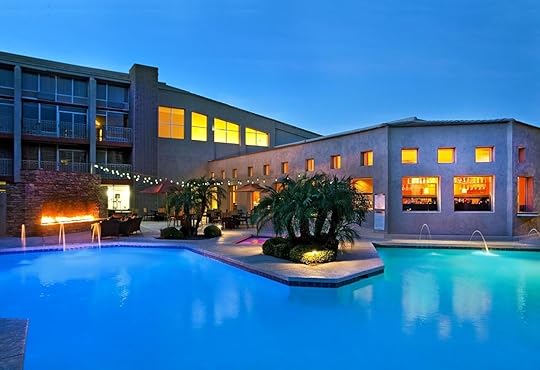
Photo: Booking.com
Ambery Phoenix Airport Hotel offers the most unique experience among hotels near the Phoenix airport. Fire + Spice Restaurant & Bar serves Native-inspired Arizona cuisine, one of the best options in the city for local fare. There’s a great pool and a large fitness center, breakfast cafe, and easy access to Tempe and to downtown Phoenix. Book a balcony room and enjoy views of the pool and the Phoenix hills. At the pool, lounge by the fireplace after a soak in the hot tub. Best of all, as a Sheraton property, you enjoy the full range of Bonvoy benefits.
Airport shuttle: Yes24-hour front desk: YesFitness center: YesWhere Ambery Phoenix Airport Hotel stands out:
UniquenessLocal flare reigns supreme here.Variety.The restaurants offer diverse menus and multiple room types are available.
Price: From $101 per night
More like thisEpic Stays11 Phoenix Airbnbs With Luxury Pools, Putting Greens and Artsy VibesBudget-Friendly Austria: 10 Incredibly Cheap Things To Do in Salzburg

The country of Austria may bring up visions of luxury skiing vacations in the Alps or expensive gourmet dinners set to live music from Schubert or Mozart, but you may be surprised to learn that one of the country’s major cities is surprisingly affordable: Salzburg.
Set in the western part of the country near the German border and the picture-perfect town of Hallstatt, Salzburg has quite the history. The city was founded in 696 and was part of Bavaria until the 14th century, when it became part of the Holy Roman Empire. It then became part of Bavaria again, then part of the Austrian-Hungary empire, then was annexed by Germany in World War II. It was after WWII that it became part of modern-day Austria.
What that means is that Salzburg has a unique history divided between the new and old parts of town, both of which are rich with things to do. If you’re trying to visit some of the coolest towns in Europe without breaking the bank, you’ll definitely want to add it to your travel list. And Salzburg is pretty cool. It has a reputation for being a day-trip stop for people on group tours, but it’s worth a few days of your vacation time, especially if you want to explore some of the recreation just outside town. Things to do in Salzburg range from hikes to beer tastings to historical sites to sprawling art museums, and the city is super safe, quite pretty, and compact enough to easily explore on foot.
So it’s just a bonus that some of the coolest things to do in Salzburg cost next to nothing. And as of writing, the exchange rate between the Euro and US Dollar is nearly one to one, making it an even more affordable time to plan a trip.
Must-know money-saving tips for things to do in Salzburg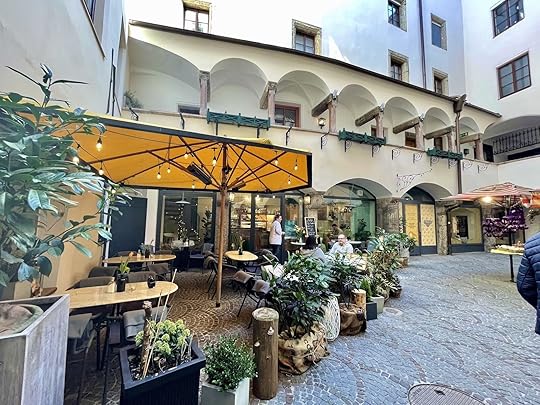
Photo: Suzie Dundas
Salzburg card: Buy the Salzburg tourist card. It’s good for one, two, or three days and includes free admission to nearly all the attractions and things you’ll want to do in Salzburg. That includes many of the recommendations above, including the Mozart museums, the river cruise, several art museums, and Hohensalzburg Fortress. It also includes free public transportation and discounts on many other area activities. You can buy it online and have the card sent to your phone, and it starts at €27 per person.Avoid the Salzburg Festival: The Salzburg Summer Festival is an amazing experience and potentially the bucket-list travel item for classical music fans. But it’s also the most crowded and most expensive time to be in Salzburg, and you’ll find hotel rooms at their peak cost during the festival. So unless you are going to Salzburg specifically to catch some of the dozens of musical and opera performances, avoid visiting between mid-July and the end of August.Travel by train: The OBB (Austrian rail system) is cheap, clean, comfortable, and quick — there’s not much reason to fly throughout the country when you could pop on a train for a fraction of the cost (and have Wi-Fi and a full food menu). You can buy tickets online and don’t even need to reserve in advance (except during the Salzburg Festival).Fly into Munich: Vienna may be the country’s main airport, but Munich, Germany, is closer to Salzburg and larger than the Vienna Airport, so you may have more options for cheaper or more convenient flights.Snack your way through lunch: Salzburg has hundreds of small restaurants, cafes, chocolate shops, local “fast food” restaurants, and outdoor street markets and beer gardens. There’s no need to sit down for a pricey formal lunch. Snacking your way through lunchtime is one of the best things to do in Salzburg, regardless of what part of town you’re in. “Fast food” in Austria is much, much better than fast food in the US, and you’ll be amazed at how tasty a cheap cafe sandwich will be, especially if you compare it to the cost and quality of something similar in the states.Budget-friendly things to do in SalzburgHear The Sound of Music nuns sing at sunrise (free)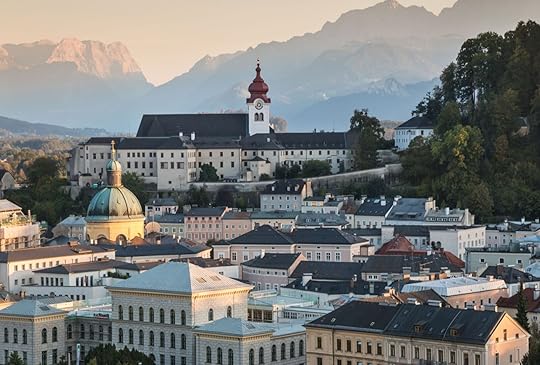
Photo: patjo/Shutterstock
If you’re at all familiar with the plot of the movie The Sound of Music, you probably know that Maria, who becomes governess to the von Trapp children, was a young recruit at a convent in Salzburg before she joined the family. But what you may not know is that it’s a true story and the actual convent where Maria first lived is in Salzburg. Nonnberg Abbey is a quick walk from downtown and parts of it are open to the public during the day.
But provided you don’t mind an early wake-up call, get to the abbey by 6:45 AM to hear the nuns as they sing Gregorian chants and songs while the sun rises. As the nuns sing, the sun rises and illuminates the chapel. You don’t need to be religious to appreciate the beauty of the experience. All are welcome and the experience happens every day, with a few exceptions for holidays. It’s completely free, though it may be nice to donate a euro or two on the way out if you enjoy the performance.
Visit Mozart’s birthplace (€11)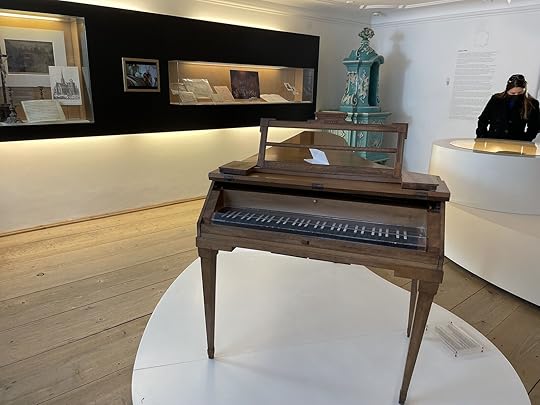
Photo: Suzie Dundas
Mozart — yes, the Mozart — was born in Salzburg, which you’ll realize after spending about 10 minutes in the city. Stores love to lean into the connection to Mozart and you’ll notice a suspiciously large amount of coffee shops advertising themselves as Mozart’s favorite cafe.
There are two Mozart museums in Salzburg: one in the home where he was born, and another in the home where he lived later in life. The Mozart birthplace home walks visitors through his life and has an impressive number of personal affects ranging from locks of hair to a piano played by the musical genius. Exhibits are in German and English. Even if you never listen to classical music, it’s still a fascinating museum. And yes, you’ll probably want to download “Rock Me, Amadeus” to listen to later that night.
Tour the fortress (€16)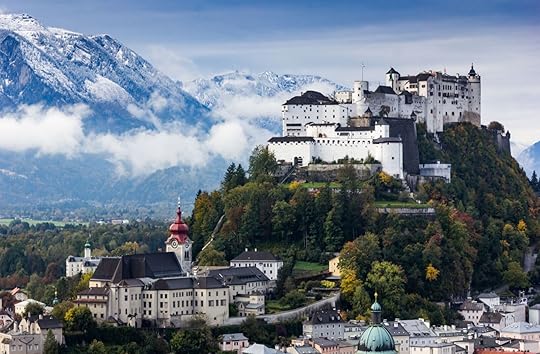
Photo: Kanuman/Shutterstock
If there’s one building that dominates the Salzburg cityscape, it’s Hohensalzburg Castle, also known as Hohensalzburg Fortress. And touring it is one of the best things to do in Salzburg. Visitors take a funicular to the top, and once you’re there, there’s a free walking tour of the huge complex, which is the size of a small town. The views from the top are amazing, looking across to Germany and down on nearly all the city’s neighborhoods and top sites. Dress warmly — it can be windy and cold 1,000 feet above the city.
Have dinner in the world’s oldest restaurant (€20+)
Photo: Suzie Dundas
St. Peter’s has been serving up food to wearing travelers since the 9th century, first to traveling monks and now to Salzburg visitors. The restaurant is actually in St. Peter’s Abbey and is partially built into the side of a cliff. Though it’s gotten some serious updates in the last thousand years or so, it still maintains much of the original historic spirit. The menu is classic Austrian with a thoughtful wine menu, though there’s a separate brunch menu available in the hip outdoor space (which becomes a lively spot on summer weekends). It’s a high-end experience but the pricing isn’t unreasonable at all — pasta dishes start around €20 and a four-course tasting menu starts at €60. Reservations are recommended.
Picnic with a pint (€2)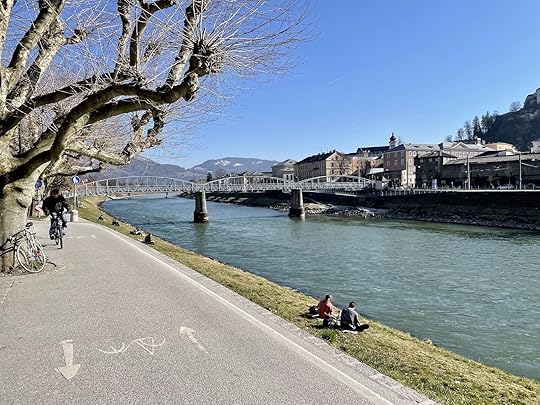
Photo: Suzie Dundas
If you’ve ever been to Austria, you know that they take their beer seriously. The relatively small country has more than 300 breweries making beer on a micro and large scale. Beer drinkers in the US may recognize Austrian beer labels like Stiegl, Trumer, or Augustiner. Because beer is so widely drunk in the country, it’s very, very affordable. You can sit at a sidewalk cafe and drink a microbrew for around €2.50. If you buy it in a grocery store for a DIY outdoor picnic, it’s even less than that.
One of the most popular things to do in Salzburg in the spring is to sit on the grassy banks of the Salzach River with some snacks and a good beer or two. There’s a bike and walking path just behind it, ensuring you don’t need to worry about loud traffic passing directly behind you. Drinking outside in public is totally cool in the country, both legally and culturally.
Stroll past the city’s modern art (free)
Photo: Suzie Dundas
You may be surprised to learn that a city as old as Salzburg is loaded with modern art, and taking the free self-guided art tour of the city is one of the best things to do in Salzburg if you want to see the city’s creative side. There are 13 modern art statues around the city, all of which are incredibly distinct. There’s an informational sign with in-depth information near each sculpture, and they’re all large-scale and easy to find. You can follow the self-guided walking tour (download the map if you don’t have phone service in Europe) or pay €10 for a guided tour.
Cruise on the Salzach River (€16)
Photo: Rasto SK/Shutterstock
If you thought Salzburg was always a bit overcast or cold, think again. Summer is warm and sunny and there’s no better activity than taking a cruise on the Salzach River when the sun is out. Cruising along the river and enjoying a coffee, beer, or snack on the way is one of the most popular things to do in Salzburg on the weekends, so try to go midweek if you’d like a little more space to yourself.
River cruises on the Amadeus Salzburg last around one hour and afford fantastic views of the old town and Alps in the distance. The captain will usually explain the sights as you go. It’s a leisurely cruise so it doesn’t travel too far, but it’s well worth it (especially if you bought a Salzburg card, in which case it’s free).
Sample “Mozart Balls” (€2)
Photo: Suzie Dundas
From “Mozart Balls” (called Mozartkugeln) to sacher-torte, there’s no shortage of chocolate in Salzburg. Several companies make chocolates called Mozart Balls, and there’s quite an interesting backstory behind who created the original — and whether the best Mozart Balls come from Salzburg, Vienna, or Germany.
If you head to the old town (near Mozart’s birthplace), you’ll find several different shops selling different types of Mozart Balls. They usually cost around €2 each at shops like Confiserie Braun, Confiserie Fürst, Mozartkugel, and Josef Manner & Comp. AG, all of which are within five minutes of each other (and near the Mozart birthplace). Do your own Mozart Ball tour and decide which brand you think is the best.
Stroll through Mirabell Gardens (free)
Photo: canadastock/Shutterstock
The hills are alive with the sound of music if you swing by the Mirabell Gardens, which are free and open to the public. If you’re a The Sound of Music fan, you’ll recognize several areas from the film and can even take a photo sitting on the unicorn statues. The gardens are most lush in late spring through fall, of course, but sights like the famous fountains and the stairs (on which the von Trapp children sang “Do, Re, Me”) are accessible year-round.
Go for a hike (potentially free)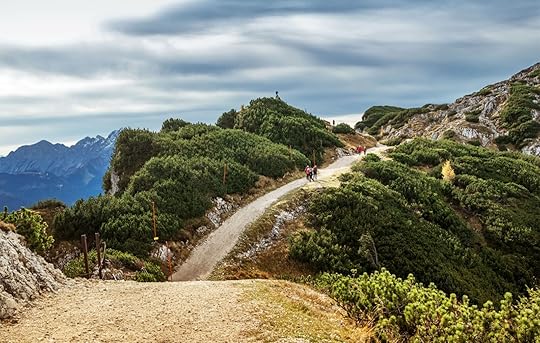
Photo: toriru/Shutterstock
It’s hard not to notice the huge mountains surrounding Salzburg. In fact, three of them are so prominent that it’s said Salzburg’s famous meringue dessert, Salzburger Nockerl, is styled after them.
Fortunately, that makes it easy to find phenomenal hiking close to the city, even if you don’t have a car. For a great hike quite close to the city, head about six miles south of town to the bottom station of the Untersberg Cable Car (which is reachable via public transportation). You can hike one of several trails around Untersberg Mountain, including one quite challenging path to the top that gains more than 4,000 feet of elevation. You can also take the cable car one-way, or both ways, if you’d rather stroll around the summit but not add much elevation change to the adventure. Taking the cable car one way is €18 or free with the Salzburg card.
More like thisTrip PlanningHallstatt Is a Picture-Perfect Austrian Getaway. Here’s How To See It Without the Crowds.How To Visit the World’s Largest Walnut Forest Deep in the Foothills of Kyrgyzstan
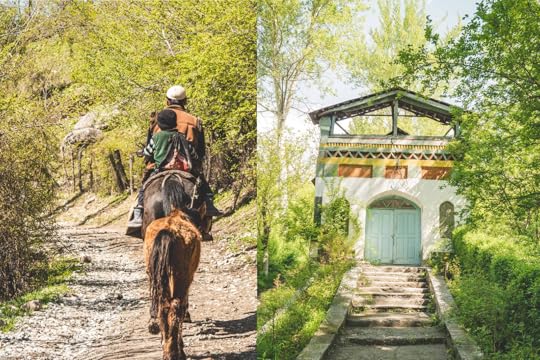
Deep in the folds of Central Asia, in the mountains of southwestern Kyrgyzstan lies the world’s largest walnut forest. Travelers usually come to Kyrgyzstan to hike or ride horses with nomads in the highlands, and then continue their Silk Road tour by visiting the oasis cities of Samarkand or Bukhara in Uzbekistan. But a visit to the village of Arslanbob, the location of the world’s largest walnut forest, and its fairy tale-like walnut forests is worth the detour.
Named after its missionary founder, Arslan Bop, one origin story of the village and the trees claims the seeds were thrown from the peaks of the Babash Ata mountains that tower over the town, and then planted by the wind. The image of an ancient missionary casting seeds to the wind actually lines up with carbon dating that shows the forests were planted around the same time as the missionary’s death, in 1120.
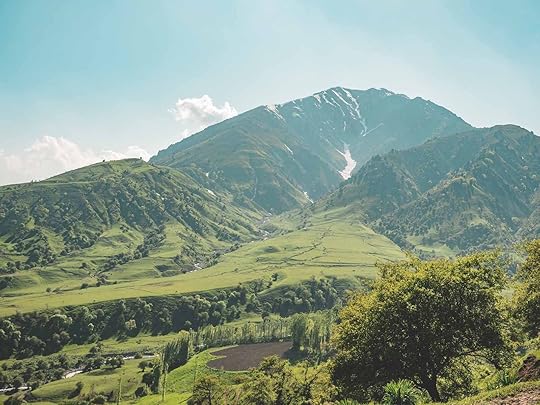
Photo: Ashley Parsons
Since then, the mostly Uzbek population of this village, an ethnic minority in southern Kyrgyzstan, has relied on the walnut trees as an important source of income. On a good year the harvest brings in more than 1,500 tons of walnuts, contributing significantly to the local economy. These walnuts are exported as far as Turkey, Russia, and Iran. When the leaves begin to fall each October, thousands of residents camp out in the forests to collect the walnuts.
“We start with the trees in and around town, otherwise the school children collect the nuts and trade them for candy or ice cream,” says Hayat Tarikov, a retired forest ranger.
Tourism eases local families’ reliance on the walnut harvest or raising livestock. A bad year can represent real financial hardship for locals. In 2020 the harvest was a bust, leaving locals and researchers scrambling to understand why – some suspect overgrazing on the forest floor, others suspect a late frost. The harvest was better in 2021, and in 2022 the trees were full of buds, promising a good year.
How to participate in Arslanbob walnut harvest festival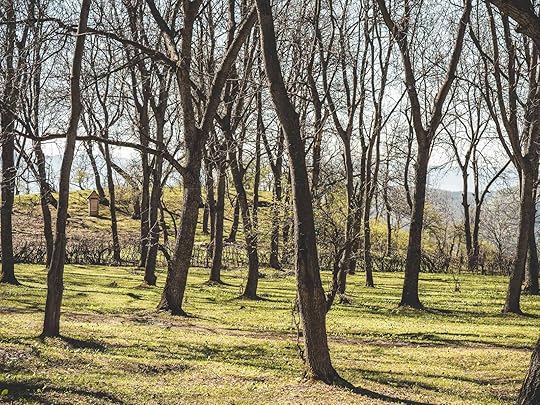
Photo: Ashley Parsons
Hayat Tarikov left the forestry service upon the collapse of the Soviet Union, and eventually became the leader of the local Community-Based Tourism (CBT) chapter. CBT offices are locally managed organizations that match travelers with homestays and recreational excursions across Kyrgyzstan. The organization also organizes community events for locals and travelers alike.
In Arslanbob, the CBT chapter plays an important role in the walnut harvest, organizing a festival to celebrate the season each year on the first weekend of October. The festival revolves around the harvest, and there are both modern and traditional events that reach beyond picking walnuts. There are folklore shows and traditional games like weightlifting, wrestling or donkey racing, a walnut cracking contest, tug of war, and a nearly 5 mile foot race through the hills and forests.

Photo: Ashley Parsons
If you intend to visit Arslanbob for the walnut harvest festival, stop into the CBT. The staffers all speak English, and can set you up with a homestay or at the very least, point you in the direction of a family with whom you can gather walnuts in the groves above the village.
Alternatively, you could hike up the walnut forest on your own and join a family already gathering walnuts. However, you’ll probably have a better understanding of what’s happening in the village you go through the CBT.
You shouldn’t have trouble finding a welcoming group to join during harvest season: Travelers visiting the village in order to see the world’s largest walnut forest are welcome (and encouraged!) to participate in helping gather walnuts and the reward is quite savory; usually families gathering walnuts host barbecues at night. Traditional roasted meats may be served alongside an Uzbek classic: plov, a dish similar to pilaf, made with rice, vegetables, spices, nuts, and some varieties even include whole cloves of roasted garlic. Picnic blankets are also decorated with a variety of cold Russian salads, and dessert is usually rich walnut cake.
How to get to the world’s largest walnut forest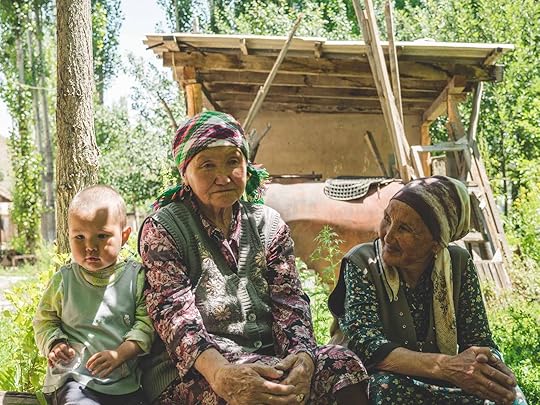
Photo: Ashley Parsons
Though it’s a relatively small country, it usually takes a rather long time to get anywhere in Kyrgyzstan. A mix of bumpy roads, endless switchbacks, constant road repairs, and construction during the mild seasons is probably to blame. From the capital city of Bishkek, Arslanbob is about a 10-hour drive. About half-way through the trip, your shared-taxi or bus driver will probably want to take a break in one of the roadside restaurants serving pelmeni, originally a Russian type of ravioli served in a light broth. These establishments are definitely worth taking a half-hour break from driving.
If your Silk Road plans have you heading to Osh, Kyrgyzstan’s ‘southern capital,’ or Uzbekistan, or Tajikistan and the Pamirs, Arslanbob is a good place to stop over for a few days, even if you’re outside the walnut harvest season. Travelers can come in a shared taxi from Bishkek to Bazaar Korgon or Jalal-bad for less than $10 USD in a shared taxi, and then catch a second bus or shared taxi up to the village for a few dollars more. It’s also possible to fly from Bishkek to Osh (about $40 USD and an hour flight) and then take a bus or shared taxi to Arslanbob, which takes around 4-5 hours.
Public transport in Kyrgyzstan is reliable, and schedules are available at the bus stations or by asking locals. Almost any car you see waiting around at a crossroads might be a shared taxi, but in big cities like Bishkek or Osh, they depart from certain parking lots (usually not too far from the bus stations).
What else to do in Arslanbob
Photo: Ashley Parsons
Arslanbob village has two easy-to-visit waterfalls, with hiking paths departing from the center of town. Spiritual visitors also sometimes pass through the village, looking for traces of Tengrism. Places in and around Arslanbob, like Holy Lake – reachable only after a two-day hike through the mountains – are home to relics of the Turkic religion practiced in Central Asia before Islam.
One often overlooked relic in Arslanbob is located just behind the central mosque. The Lion’s Gate, 100m from the town center, is a square of calm and solitude. A thin sidewalk leads up to a colorfully decorated wooden building. According to a local elder named Sadiur, this is a sacred place, and even during the USSR period when practicing religion was forbidden, people made pilgrimages to visit the tomb. Sadiur says Emperor Tamerlane dreamt of Arslanbob and was commanded to build a memorial gate here.
If you’re more interested in adventure, horse-trekking in the summer and back-country skiing in the winter are popular activities, although the skiing option is not for beginners and you should bring your own gear. It’s not all challenging outdoors activities though; there is a bit of a cottage core aesthetic to the village: Arslanbob’s wild berries, apples, and medicinal herbs can be gathered with the help of a local. There’s something for every Silk Road explorer to do in Arslanbob. 
This Hotel Chain Now Offers a ‘Hiking Concierge’ for Guests Staying Near National Parks
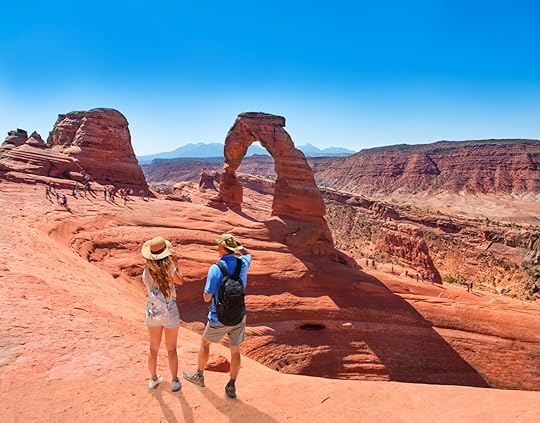
If you love hiking, national parks are the perfect place in the US for a vacation or day trip. But with summer quickly approaching, beloved favorites like Yosemite are guaranteed to be packed (though some national parks can be way less crowded).
Planning a trip to a national park can be overwhelming, with multiple trailheads and park entrances, new reservation systems in response to the pandemic, and subjective rating systems that make it hard to gauge how challenging a trail truly is. So to help upcoming visitors out, WorldMark by Wyndham, which owns several vacation clubs close to some of the best national parks in the country, launched a new hiking concierge package in late May.
The lodging company partnered with Ash Nudd, a former park ranger and creator of the Dirt In My Shoes hiking blog, to create the hiking concierge package. Each package includes a personalized video from Nudd with expert tips on navigating national parks and an access code to download a detailed park itinerary on the Dirt In My Shoes website. Guests will receive customized recommendations for what to do while in the various parks as well as itineraries, packing tips, and more.
“Millions of people are flocking to national parks each year to witness the natural beauty and awe-inspiring sights this country has to offer, which means [the parks] are busier than ever,” Nudd said in a traveler-facing statement. “As the official WorldMark by Wyndham Hiking Concierge, I will provide you with access to a designated park itinerary that helps you avoid the crowds and tips for seeing the best sights, helping you make the most of your vacation.”
Discover national parks together. https://t.co/do51xR0go2 pic.twitter.com/HBcqVYsjnZ
— WorldMark by Wyndham (@WorldMark) May 31, 2022
The hiking concierge service is available at five WorldMark by Wyndham properties:
The Moab Resort, a WorldMark by Wyndham Associate Resort – near Arches National Park in UtahWorldMark Bass Lake– near Yosemite National Park in CaliforniaWorldMark West Yellowstone – near Yellowstone National Park in WyomingWorldMark St. George – near Zion National Park in UtahWorldMark Estes Park – near Rocky Mountain National Park in Colorado.To be eligible for the hiking concierge promotion, travelers must book a minimum of two nights by December 31, 2022, for travel by March 31, 2023, and use the booking code “Hike22.” Unlike traditional Wyndham Hotels, WorldMark by Wyndham properties are time-shares and condos, which means guests can book multi-room suites with separate living spaces, laundry facilities, and even fully equipped kitchens in some destinations. 
The World’s 50 Best Palaces To Get Your Royal Travel Fix
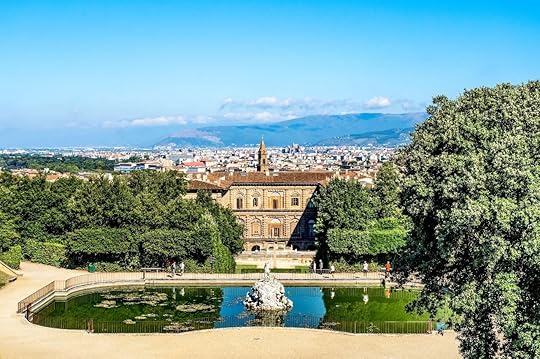
The US is still reeling from a long Memorial Day weekend, but the UK, not to be outdone, is looking ahead to a holiday weekend of its own – and it’s not merely three days, but four. The Platinum Jubilee of Queen Elizabeth II is being held from June 2 through June 5, in celebration of Queen Elizabeth II’s 70 years on the throne. 70 years. That’s longer than The Simpsons and South Park have been on the air combined. When Queen Elizabeth II was crowned, people primarily got their news from the radio, made calls on rotary phones, and the internet would have sounded like a far-fetched futuristic joke. You get the point. She’s been on the throne a long time – longer than any other monarch – and has earned a party.
It’s a good time to be in the UK right now. You’d be able to celebrate the Queen’s reign with a wide range of events, like parades, horse races, concerts, and pageants. If you’re not in the UK, or simply can’t bring yourself to party with the gusto of a a 96-year-old woman, you’re in luck. You can still get your dose of regal pomp and circumstance by checking out some of the world’s coolest palaces, which might just inspire your next trip.
Researchers at Roofing Megastore, a renovation and building design specialist, analyzed search data on Google and Instagram to discover which palaces are the most popular. They’ve even included color palettes for each palace’s interior. 50 are ranked in total, but we’re breaking down the best of the best. From the UK to France, India, and the Czech Republic, these are the most famous royal palaces in the world.
Buckingham Palace, UK
Photo: I Wei Huang/Shutterstock
The administrative headquarters of Queen Elizabeth II, Buckingham Palace is perhaps the best-known palace in the world. Originally built in 1703 for the Duke of Buckingham, it was purchased by King George III in 1761 before being expanded in the 19th century. It became the London residence of Queen Victoria in 1837, and now of Queen Elizabeth II, home to 775 rooms and the largest private garden in London.
Windsor Castle, UK
Photo: sloukam/Shutterstock
Located in the county of Berkshire, just outside London, Windsor Castle was built in the 11th century and has been used by the reigning monarch ever since. It’s the longest-occupied palace in Europe, with influences ranging from Gothic and Baroque to Rococo and Victorian. It’s the main residence of Queen Elizabeth II.
Kensington Palace, UK
Photo: Mistervla/Shutterstock
A residence of the British royal family since the 17th century, Kensington Palace is the current London residence of Prince William and Catherine, Duchess Cambridge. Historic parts of the palace are open to the public, and the Royal Ceremonial Dress Collection is also housed here.
The Palace of Versailles, France
Photo: Stockkbym/Shutterstock
The most famous palace in France, Versailles is a former royal residence in Paris built by Louis XIII and expanded by Louis XIV. Louis XIV made the palace the seat of his court and government in the late 17th to early 18th centuries, effectively making Paris’ entire socio-political scene revolve around the palace. Versailles has been designated a World Heritage Site for its cultural significance.
Mysore Palace, India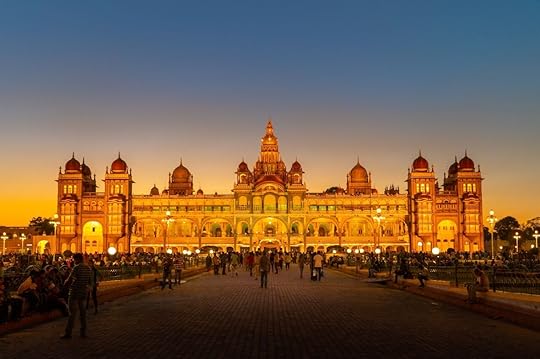
Photo: Foofa Jearanaisil/Shutterstock
Spanning 72 acres, Mysore Palace is the most visited tourist attraction in India after the Taj Mahal. Located in Mysore, Karnataka, it was built inside the Old Fort in the 14th century and reconstructed several times after multiple fires. The current building was constructed between 1897 and 1912 and still serves as a royal residence.
The Forbidden City, China
Photo: chuyuss/Shutterstock
The Forbidden City might sound like the villain’s lair in a sci-fi movie, but it’s actually one of China’s most fascinating and culturally rich sites. Built in 1420, the Forbidden City was home to emperors and their families throughout the Ming and Qing dynasties. The last emperor who resided there was expelled in 1925 when the area was turned into the Palace Museum, though it remains one of China’s most important cultural heritage landmarks, receiving thousands of visitors per day.
Hampton Court Palace, UK
Located in the London borough of Richmond upon Thames, Hampton Court Palace was built starting in 1514, and quickly became one of King Henry VIII’s favorite palaces. Now one of Queen Elizabeth II’s palaces, it’s known for its gardens, maze, historic royal tennis court, and being home to the largest grape vine in the world.
Prague Castle, Czech Republic
Photo: Travel Faery/Shutterstock
Built in the 9th century, Prague Castle served as the seat of power for the kings of the Holy Roman emperors, Bohemia, and the presidents of Czechoslovakia. The Guinness Book of World Records lists the castle as the largest ancient castle in the world at 750,000 square feet. Currently, it’s the official office of the President of the Czech Republic and houses the Bohemian Crown Jewels.
Palazzo Pitti, Italy
Photo: MidnightTrainToHwt/Shutterstock
Italy is home to some of Europe’s oldest and most eye-catching medieval castles, but Palazzo Pitti in Tuscany Is among the most famous and celebrated. The structure dates back to 1458 and became the main residence of the ruling families of Tuscany when it was purchased by the Medici family in the 16th century. Now the largest museum complex in Florence, the palace is separated into several principal galleries and museums. 
Matador Network's Blog
- Matador Network's profile
- 6 followers



